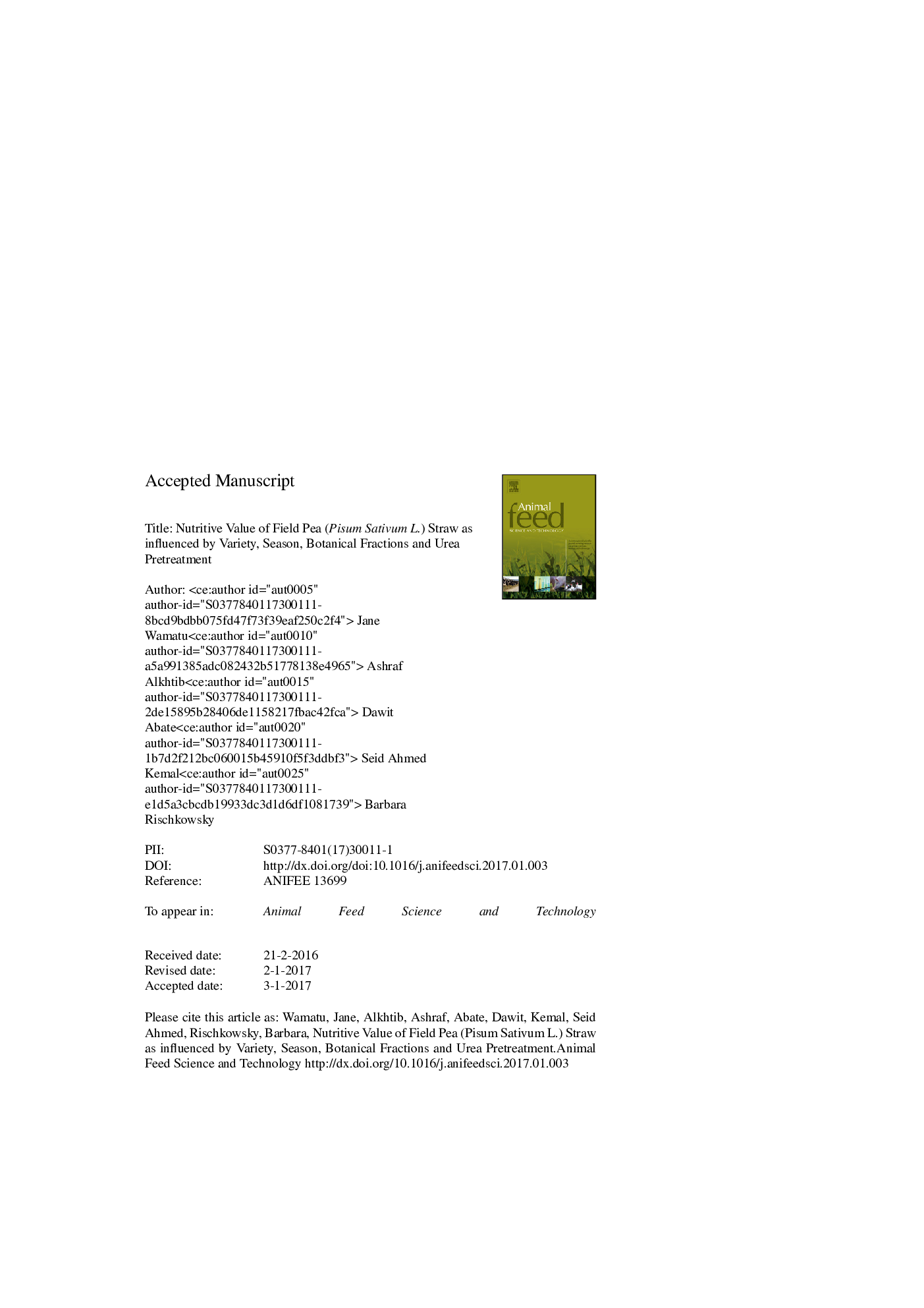| Article ID | Journal | Published Year | Pages | File Type |
|---|---|---|---|---|
| 5538756 | Animal Feed Science and Technology | 2017 | 25 Pages |
Abstract
To evaluate the potential of straw from field pea (Pisum sativum L.) as feed for ruminants in tropical highlands, the effect of variety (n = 6), season (main and short), botanical fraction (leaf and stem) and treatment with 4% urea on chemical composition (CP, NDF, ADF, ADL) and in vitro gas production during 24 h was studied. The latter was used to estimate in vitro organic matter digestibility (IVOMD). Variety had a significant (P < 0.05) effect on CP and ADL of the straw. The differences between the leaf and stem were significant (P < 0.001) for all parameters. Season affected the nutritive value of the leaf but not of the stem. The nutritive value of the whole straw was strongly correlated to the nutritive value of the leaf (r = 0.87) and stem (r = 0.86). The urea treatment increased CP from 99 to 121 g/kg DM and ME from 6.02 to 6.39 MJ/kg DM. The effect of treatment was thus much lower than the variance among varieties, so that selection for better quality straw without compromising pea yield could be interesting option for smallholder farmers in mixed crop - livestock systems.
Keywords
Related Topics
Life Sciences
Agricultural and Biological Sciences
Animal Science and Zoology
Authors
Jane Wamatu, Ashraf Alkhtib, Dawit Abate, Seid Ahmed Kemal, Barbara Rischkowsky,
